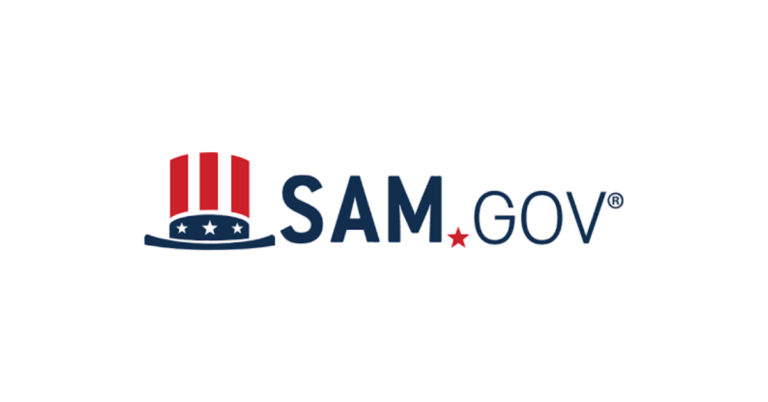Winning IDIQ Contracts Now: You Want One
IDIQ contracts were primarily introduced to cater to the unique requirements of government agencies that frequently needed access to goods or services but could not precisely predict the quantity or exact timing of those needs. Over the years, the IDIQ framework has become one of the federal government’s preferred methods, especially for complex projects requiring various tasks over an extended period.
Understanding the Elements of an IDIQ Contract
Indefinite Delivery, Indefinite Quantity (IDIQ) contracts are a staple in government contracting, providing flexibility to both the government and the contractor. Despite their “indefinite” label, these contracts have specific parameters in place to maintain structure and clarity. Here’s a deeper dive into some key elements:
1. Minimum and Maximum Quantities:
- Purpose: While the nature of the contract suggests ambiguity, there are clear boundaries set.
- Minimum Quantity: The government assures a minimum purchase, guaranteeing the contractor a base level of business. This quantity is typically small but ensures that the contractor is obligated to deliver at least that stipulated amount.
- Maximum Quantity: This denotes the ceiling or the most the government can order. This sets clear expectations for the contractor on potential delivery demands.
2. Ordering Period:
- Duration vs. Ordering: Even if an IDIQ contract is set for multiple years, it doesn’t mean the government can order anytime throughout that entire duration.
- Defined Period: The contract will stipulate an “ordering period,” a specific window when the government is eligible to place orders for the necessary goods or services. This provides predictability for both parties, ensuring the contractor is prepared to fulfill orders during these times.
3. Pricing:
- Variable Nature: Pricing structures within a IDIQ contract can differ based on the terms agreed upon.
- Pre-set Pricing: In some instances, prices for certain tasks or items are predetermined and outlined in the primary contract. This provides a fixed rate for those specific deliverables throughout the contract’s duration.
- Order-Level Pricing: Alternatively, pricing can be set at the task or delivery order level. This means that for each separate order or task, the price might be negotiated or determined based on prevailing conditions or specific requirements.
By understanding these elements, contractors can better navigate the intricacies of IDIQ contracts, ensuring effective delivery and compliance.
Understanding the Competitive Landscape in Government Contracting
When delving into government contracting, especially for multi-award IDIQs (Indefinite Delivery/Indefinite Quantity contracts), understanding the competitive landscape is paramount. Here’s a deeper look into key elements:
1. Fair Opportunity:
- Definition: Within IDIQs, every contractor must be given an equal chance to bid on individual task or delivery orders. This ensures a level playing field for all parties involved.
- Exceptions: The Federal Acquisition Regulation (FAR) outlines specific scenarios where this rule may not apply. For instance, certain urgent requirements might bypass the typical bidding process.
2. “On-Ramp” and “Off-Ramp” Provisions:
- On-Ramping: Some IDIQs have mechanisms that allow for the integration of new contractors during the contract period. This provision ensures that the government can tap into emerging talents or capabilities that weren’t available or known during the initial award phase.
- Off-Ramping: Conversely, if a contractor consistently underperforms or fails to meet stipulated criteria, they can be removed or “off-ramped” from the contract. This ensures quality and efficiency in the delivery of services or goods.
3. Best Value Consideration:
- Beyond Price: While cost is undeniably a significant factor, the government doesn’t always award contracts to the lowest bidder.
- Holistic Evaluation: “Best value” determinations mean the government weighs various factors. This includes the quality of goods or services, the contractor’s track record (past performance), and their technical capability or expertise. By doing so, the government aims to ensure optimal value for taxpayers, not just in terms of cost but also in quality and reliability.
For any entity aiming to succeed in this domain, a comprehensive grasp of these principles is vital. They not only shape the competitive landscape but also define strategies to navigate it successfully.
Deep Dive: IDIQ Variants and Their Importance
The world of government contracting offers a plethora of contract types tailored to meet the varying needs of agencies and their projects. While the traditional Indefinite Delivery/Indefinite Quantity (IDIQ) contract is perhaps the most renowned, there are other variants that serve equally critical roles. Here’s a more detailed look:
1. MAC (Multiple Award Contract)
- Definition: Similar to IDIQ, the MAC pre-qualifies multiple contractors.
- Distinguishing Feature: MAC contracts are designed for broader scopes of work, giving agencies flexibility in the types of projects or services they can procure under a single contract vehicle.
2. GWAC (Government-Wide Acquisition Contract)
- Definition: A special type of IDIQ contract that allows any federal agency to place an order.
- Distinguishing Feature: GWACs are primarily focused on IT solutions. This means that an agency looking for technology services or solutions would likely explore GWAC options. Because of its multi-agency accessibility, GWACs streamline the procurement process for IT services across the federal landscape.
3. BPA (Blanket Purchase Agreement)
- Definition: A method for government departments to fill anticipated, repetitive needs for supplies or services.
- Distinguishing Feature: Think of BPA as a “tab” or an “account”. Instead of continually issuing new contracts for recurring needs, departments can simply “charge” against their BPA. It’s a streamlined approach that reduces administrative efforts and accelerates the procurement process for routine requirements.
Understanding these variants is key for any business aiming to navigate and excel in the complex world of government contracting. Each provides unique advantages and opportunities, depending on the nature of the project and the needs of the agency.
Risks and Considerations
While IDIQ contracts have many advantages, they aren’t without challenges:
1. Volume Uncertainty: Since the exact quantity isn’t defined, contractors must be ready for varying volumes of orders. This variability can make it difficult to plan resources and inventory effectively. Companies must maintain a level of flexibility to scale up or down quickly, which can strain financial and operational systems. Additionally, managing workforce and supply chain logistics in such an unpredictable environment requires robust contingency planning and efficient resource management.
2. Funding: Task orders are contingent on appropriations. If funds are not allocated or redirected, expected task orders may not materialize. This dependency on federal budgets can create a volatile business environment, where anticipated revenues may be delayed or canceled due to shifts in government funding priorities. Contractors need to have strong financial health and alternative revenue streams to mitigate the risk of interrupted cash flow and project delays.
3. Competition: With multi-award IDIQs, competition continues even after winning a spot on the contract. Contractors must continuously bid on individual task orders against other pre-approved vendors, maintaining a high level of performance and competitive pricing to secure ongoing work. This ongoing competition can drive down profit margins and necessitate constant innovation and efficiency improvements. Furthermore, the pressure to consistently win task orders can lead to potential underbidding, where contractors might propose lower prices that could affect their profitability and quality of service delivery.
4. Contract Management Complexity: IDIQ contracts often involve managing multiple task orders simultaneously, each with its own specific requirements and timelines. This complexity requires sophisticated contract management systems and skilled personnel to ensure compliance, timely delivery, and quality control. Mismanagement can lead to penalties, reputational damage, and loss of future business opportunities.
5. Regulatory Compliance: Adhering to the stringent regulatory requirements associated with federal contracts can be challenging. Contractors must stay up-to-date with changes in laws and regulations, ensure that all practices are compliant, and prepare for regular audits. Failure to comply can result in fines, contract termination, or debarment from future federal contracting opportunities.
6. Administrative Burden: The administrative tasks associated with IDIQ contracts, such as frequent reporting, proposal submissions for task orders, and maintaining records, can be resource-intensive. Small and medium-sized businesses, in particular, may find the administrative burden overwhelming, necessitating the investment in specialized staff or third-party services.
7. Performance Risk: Delivering on task orders to the satisfaction of the federal agency is critical. Poor performance on one task order can jeopardize the contractor’s ability to secure future task orders under the same IDIQ contract. Therefore, maintaining high standards of performance and responsiveness is essential to sustain long-term success.
Understanding and effectively managing these risks and considerations is crucial for businesses seeking to navigate the complexities of IDIQ contracts successfully.
Conclusion
IDIQ contracts represent a delicate balance between flexibility and predictability, making them a crucial tool in the procurement strategies of various federal agencies. Originating as a response to the need for more efficient and responsive contracting methods, IDIQ contracts have evolved significantly over the years.
These contracts are particularly beneficial in scenarios where the exact quantities of supplies or services cannot be determined at the time of contract award. Their ability to accommodate changing requirements without necessitating multiple contract modifications makes them indispensable.
As we look towards the future, the IDIQ, with its inherent adaptability, will likely continue to be a significant part of the government contracting landscape. Federal agencies benefit from the streamlined procurement processes that IDIQ contracts offer, enabling them to quickly address emerging needs and adjust to shifting priorities.
This adaptability is particularly vital in today’s fast-paced and often unpredictable environment, where agencies must be prepared to respond to a wide range of challenges and opportunities.
For businesses eyeing the federal market, a thorough understanding of IDIQ contracts can be a pathway to sustained growth and success. These contracts provide a mechanism for companies to secure long-term relationships with federal agencies, offering a steady stream of opportunities and revenue.
Mastering the nuances of IDIQ contracts, such as compliance requirements, proposal preparation, and performance management, can position businesses to effectively compete and thrive in the federal contracting arena. Moreover, leveraging the flexibility of IDIQ contracts allows companies to innovate and deliver value in ways that align with the dynamic needs of their government clients.







